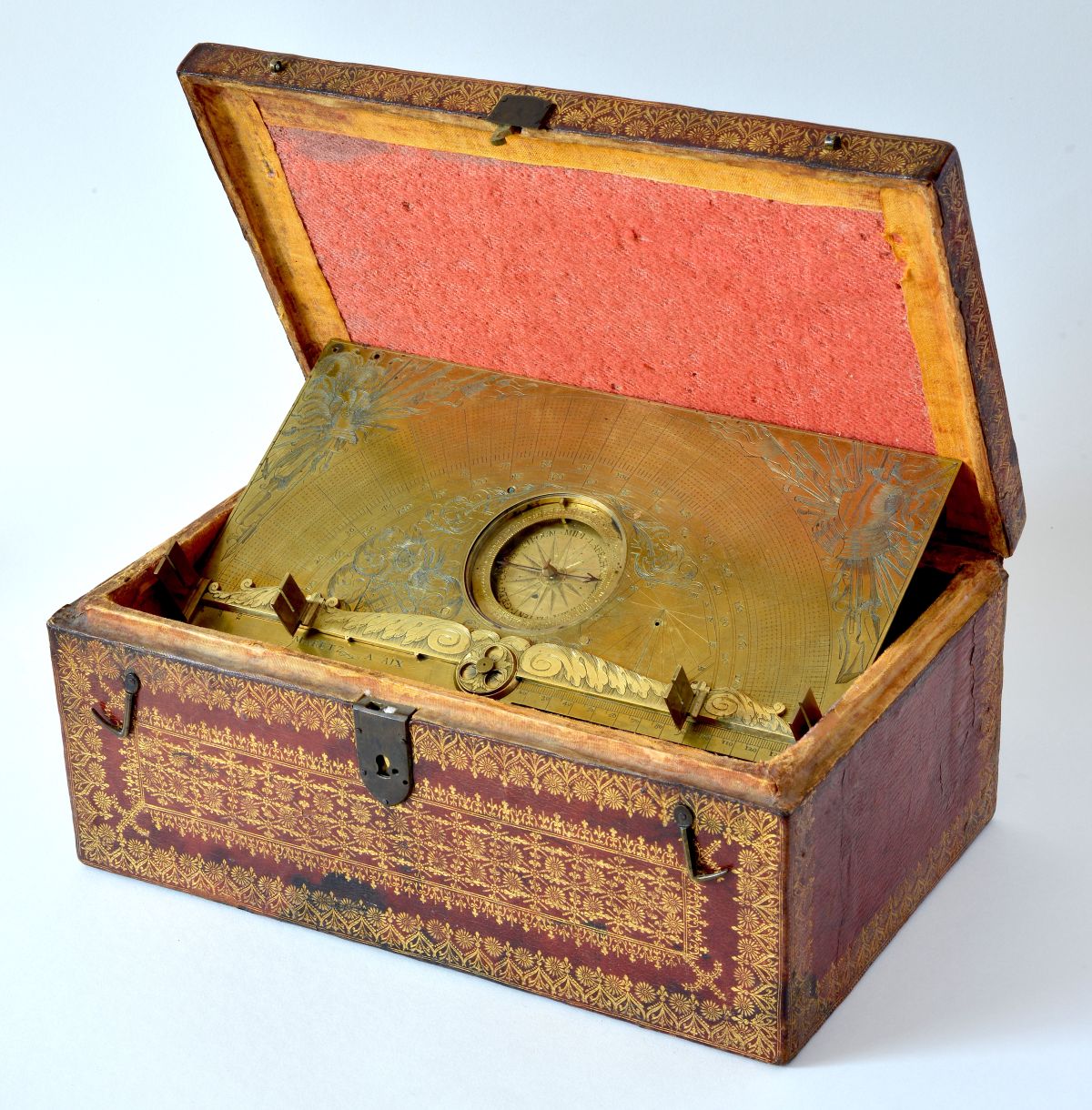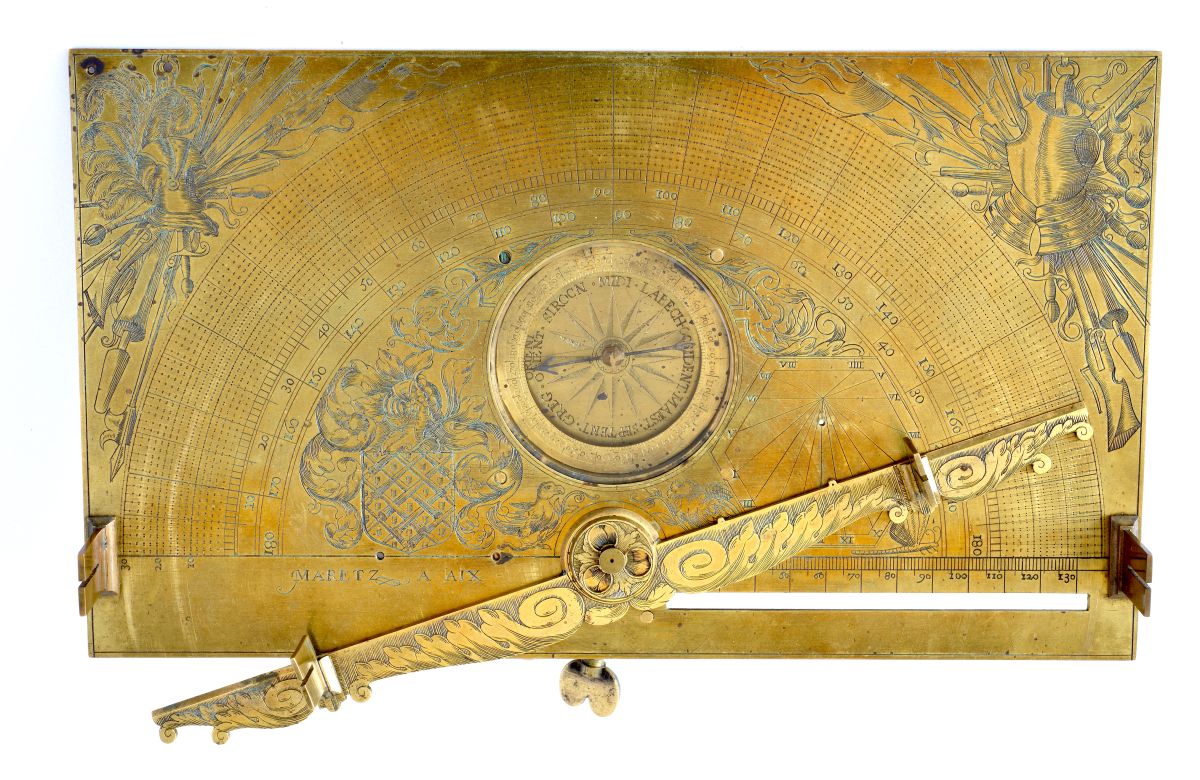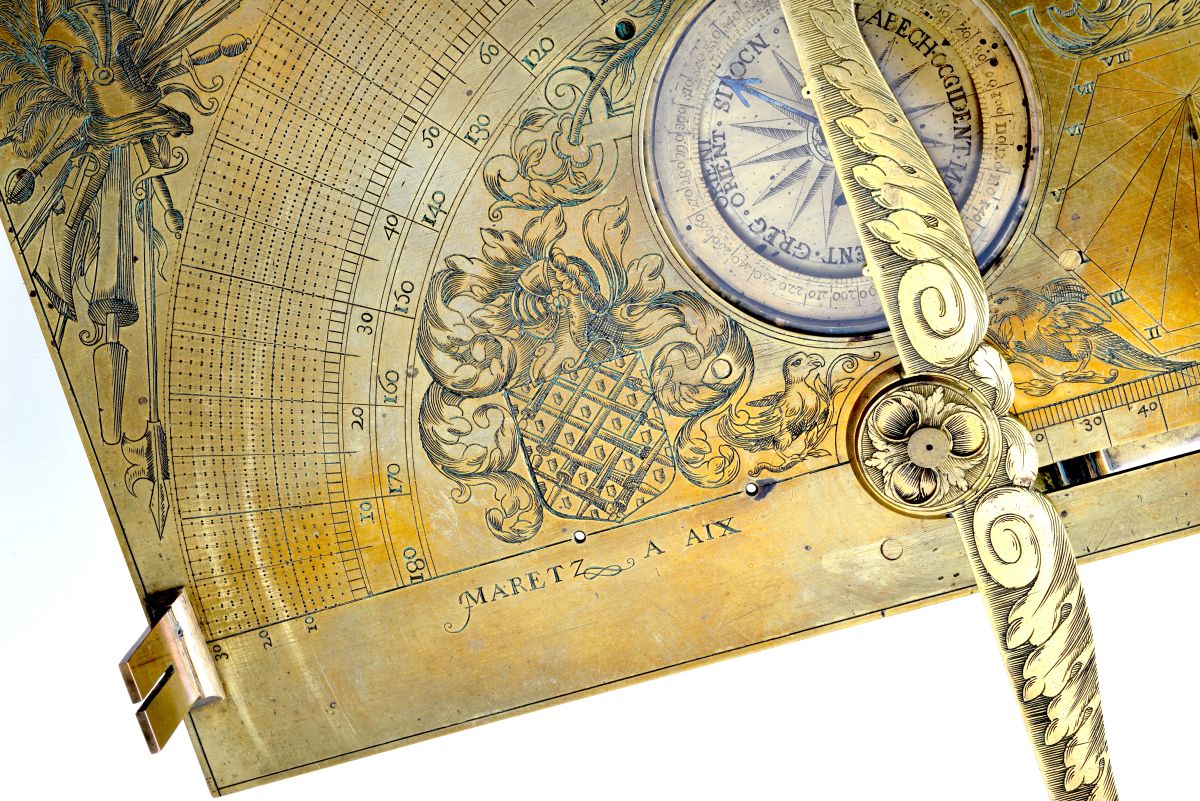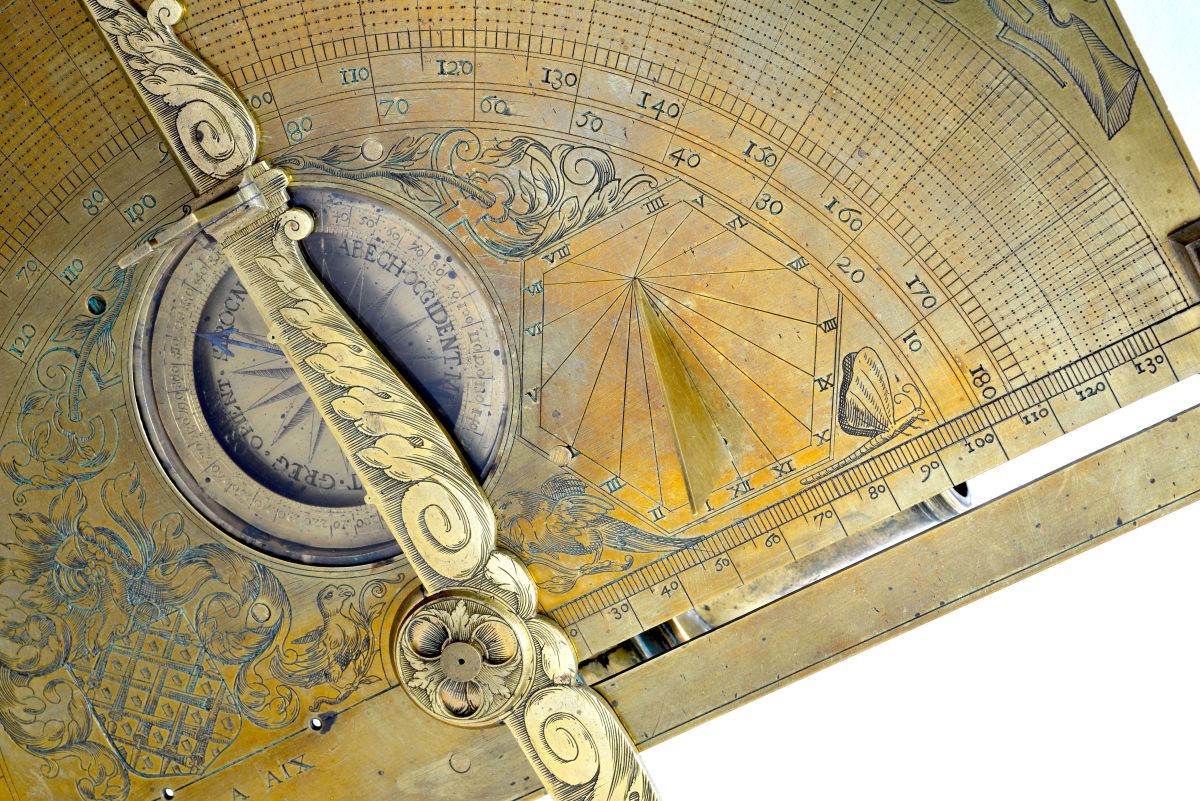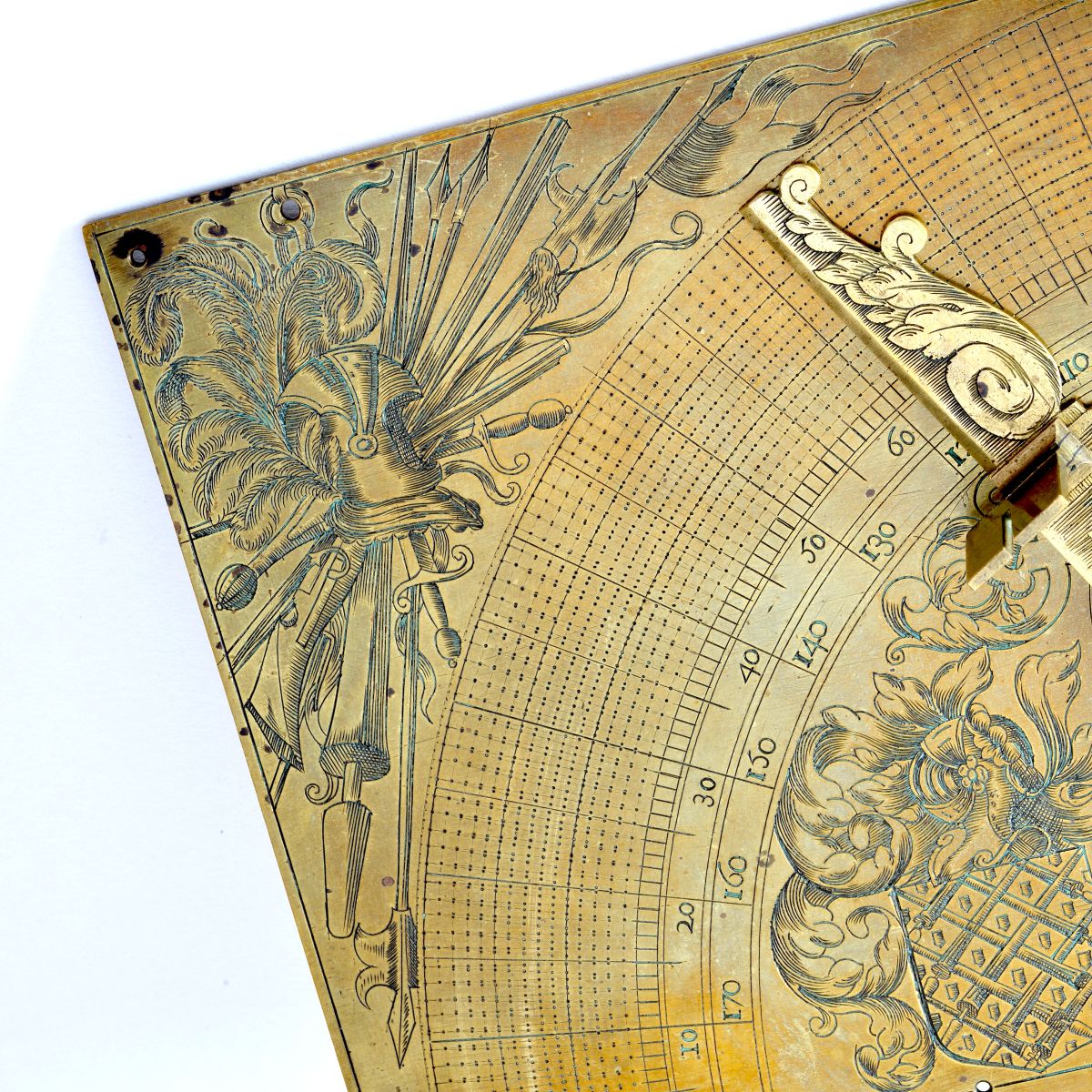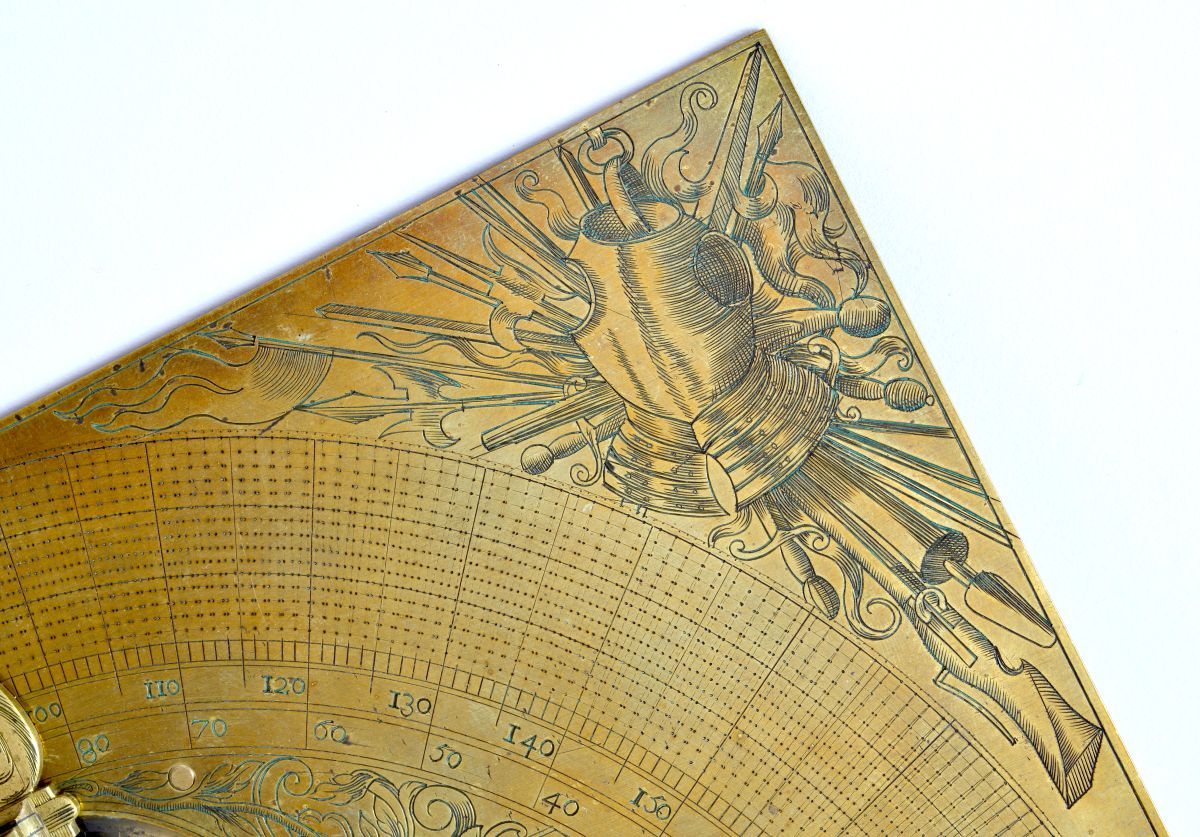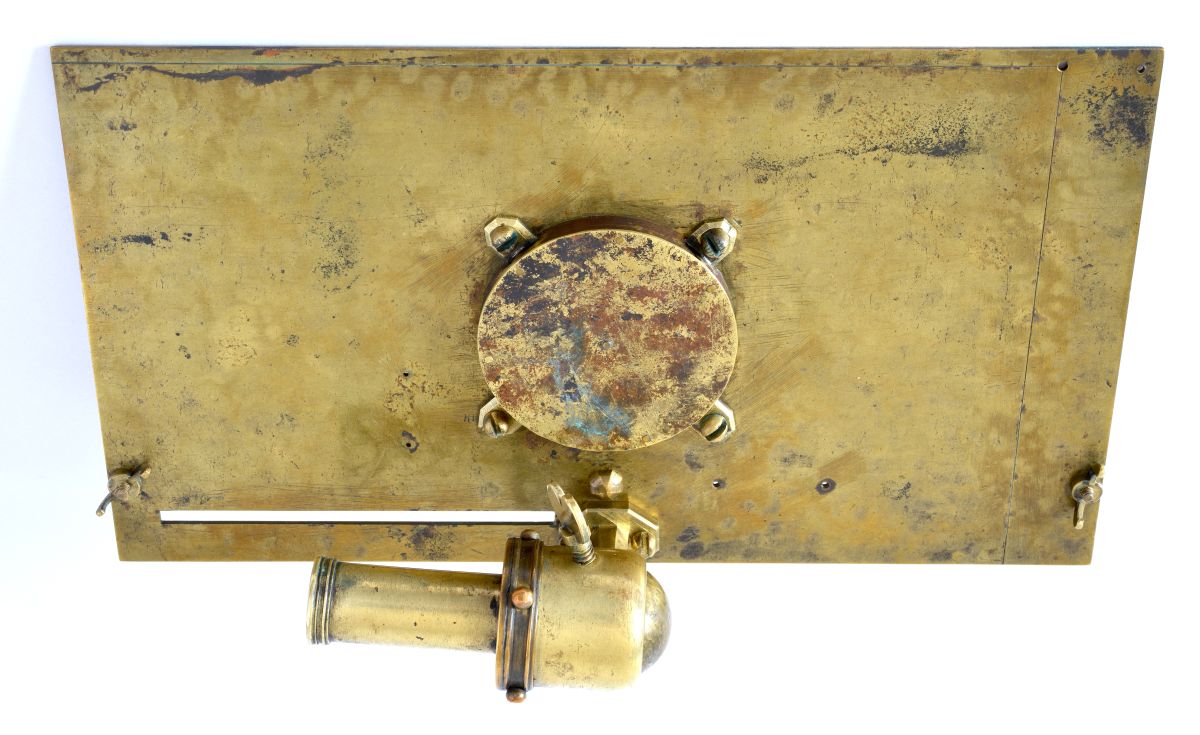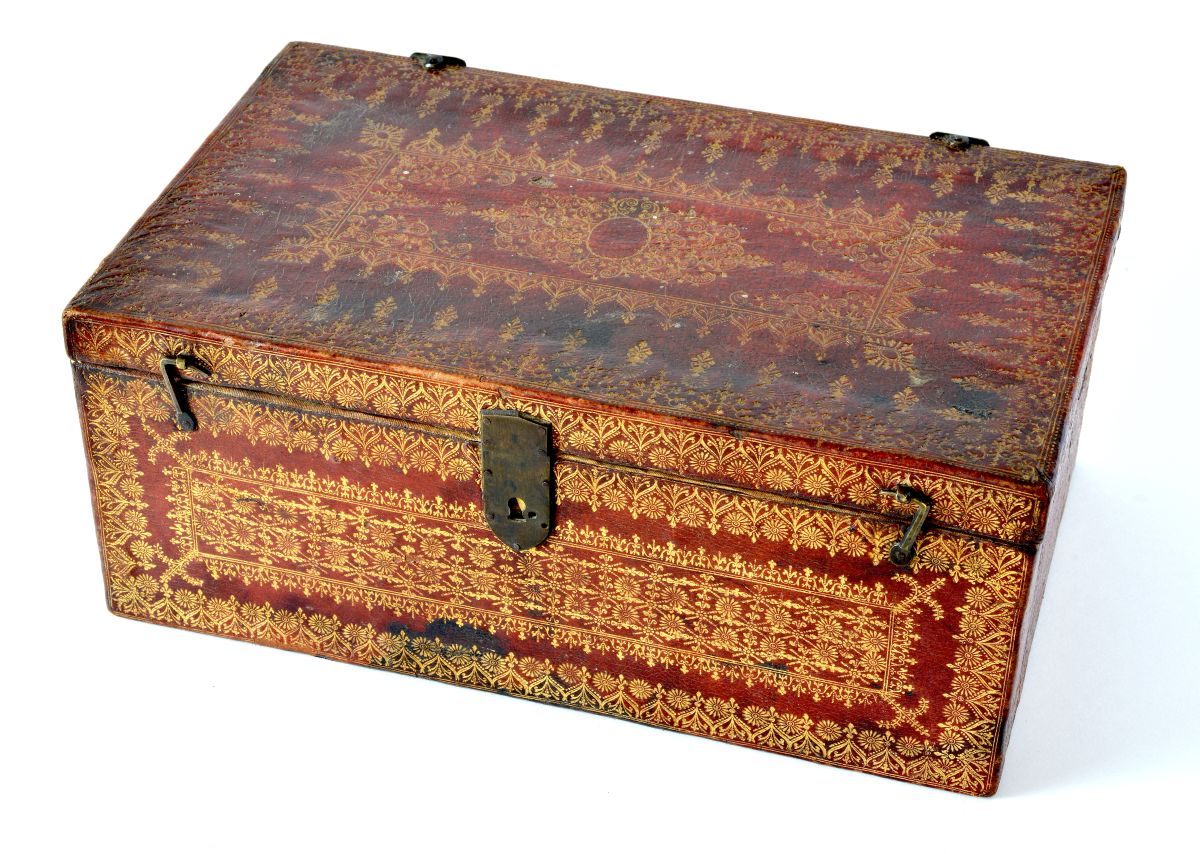Exceptional brass graphometer signed "MARETZ A AIX" in its crimson leather-covered wooden case decorated with gilded floral motifs.
The instrument consists of a rectangular brass turntable fitted with a compass, an “alidade” and a swivel foot.
The top of the turntable is fully engraved and the set is composed as follows:
A semi-circle graduated from 0 to 180 degrees in both directions, numbered from 10 to 10, and 15 other scales, made up of dots and double-dots separated by small lines, enable each one-degree interval to be subdivided into 4-minute intervals of angle, according to the transverse method but here with remarkable precision. At each end of the semicircle's base line are sighting pinnacles, secured by wing nuts.
A small hole in the center of the base line is used to secure the sighting alidade with a screw and wheel nut. The latter, entirely decorated with foliate scrolls, is fitted with a sighting pinnule at each end.
Inside the semi-circle is a magnetic compass (5.7 cm in diameter) with its original bubble glass. The pivot-mounted blued-steel needle is located just inside the rim of a tablet on which degrees are engraved, from 0° South to 360°, divided into 2° and numbered by 10. The bottom of the compass is engraved with a 16-direction compass rose, with associated names for 8 directions: SEPTENT. GREG. ORIENT. SIROCN. MIDI. LABECH. OCCIDENT. MAEST. and a small rosette is engraved in the center.
Below the base line of the semicircle, on the left, is the signature "MARETZ A AIX" and on the right, a linear scale graduated from 0 to 130 (100 units correspond to 3 inches at the time) with a slot underneath to slide a gauge consisting of a small brass rectangle decorated with an acanthus leaf and secured with a butterfly screw.
Under the semicircle, on either side of the compass, is a knight's coat of arms surrounded by scrolls on the left, and a horizontal hexagonal sundial on the right, with two small holes in the center to hold the triangular gnomon, also in brass. The latter corresponds to the 43°30' latitude of Aix-en-Provence.
A butterfly is engraved on the right-hand side of the dial, and two branching birds are also engraved below the compass.
Military trophies are engraved in each upper corner of the plate.
The underside of the plate is unengraved and features a support with butterfly screw for the ball-and-socket joint intended for attachment to a surveyor's stick. We can also see the back of the compass and the 4 screws used to secure it.
The instrument is set in a crimson leather-covered wooden case decorated with gilded floral motifs. The interior, consisting of 3 lidded compartments, is covered with a pinkish-red fabric that is also found on the inside of the lid.
The long, narrow compartment holds the alidade when disassembled. Each of these lids has a pair of brass hinges secured by small iron nails. The box lid is similarly hinged, with a brass latch controlled by a key (missing) and held in place by a pair of L-shaped brass latches.
Note 1: The angle of the sundial's gnomon clearly shows that the city inscribed on this instrument is that of Aix-en-Provence. Aix-en-Provence is a cathedral city, home to the faculties of arts and law of the University of Aix-Marseille. In 1501, Louis XI established the Parliament de Provence, which remained in existence until 1789.
A 17th-century study of the town describes the manufacturer of this instrument.
During the first half of the 17th century, Jacques Maretz, professor of mathematics, geometer and engraver, lived in the rue de Jouques. He wrote a "Plan géométrique de la ville d'Aix" in 1622 and was still living in 1642. Jacques Maretz produced several maps of Provence between 1622 and 1640 (see BnF). The graphometer was invented by Philippe Danfrie (1532-1606), who published a description in Paris in 1597.
The present instrument was engraved with great care, skill and knowledge, producing a luxuriously packaged instrument, perhaps for a great civic occasion and destined for a prominent local figure (the coat of arms has not been identified).
Note 2: this instrument is used to measure angles between objects in the same plane. It is an instrument for geodesy and topography.
Dimensions: Turntable: length of 25 × width of 14.3 cm; Case: 28 x 17 x 11.5 cm
France circa 1630.
Additional documentation available.
Reference : D/L4
Price and additional photos on request.
Also discover many more marine and sciences objects in the dedicated section of our French website : « Marine et Sciences ».
